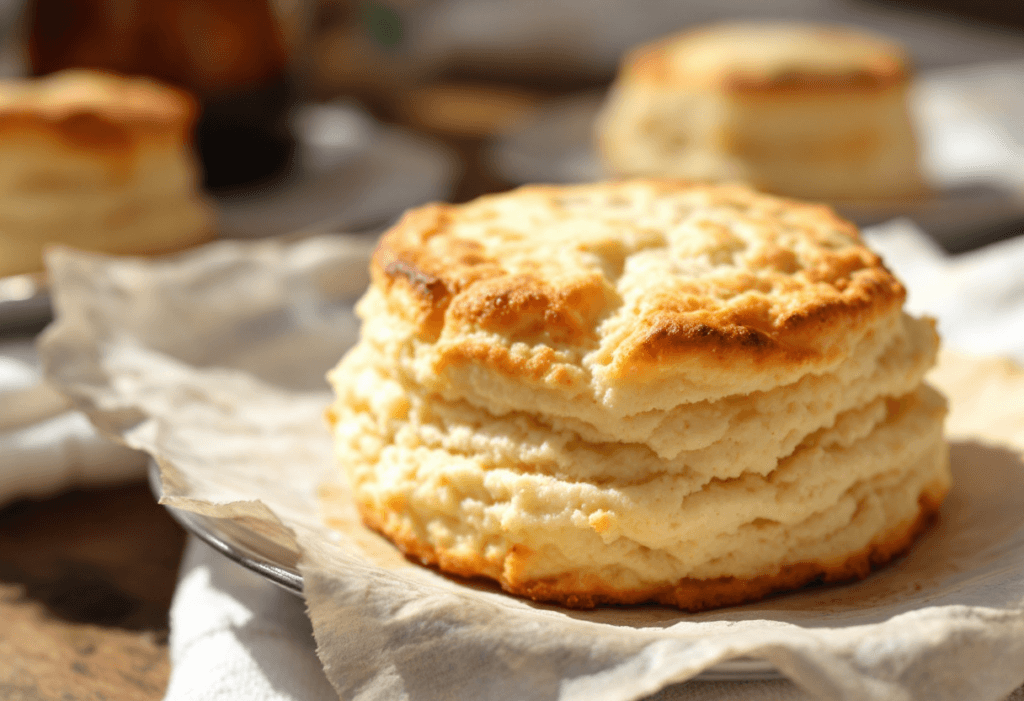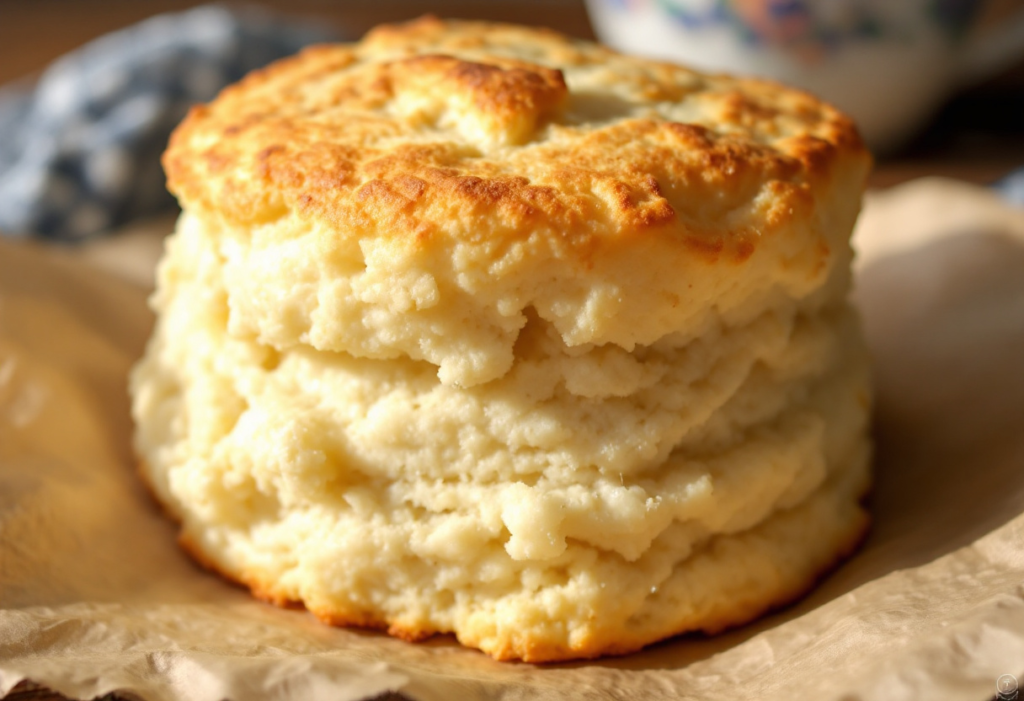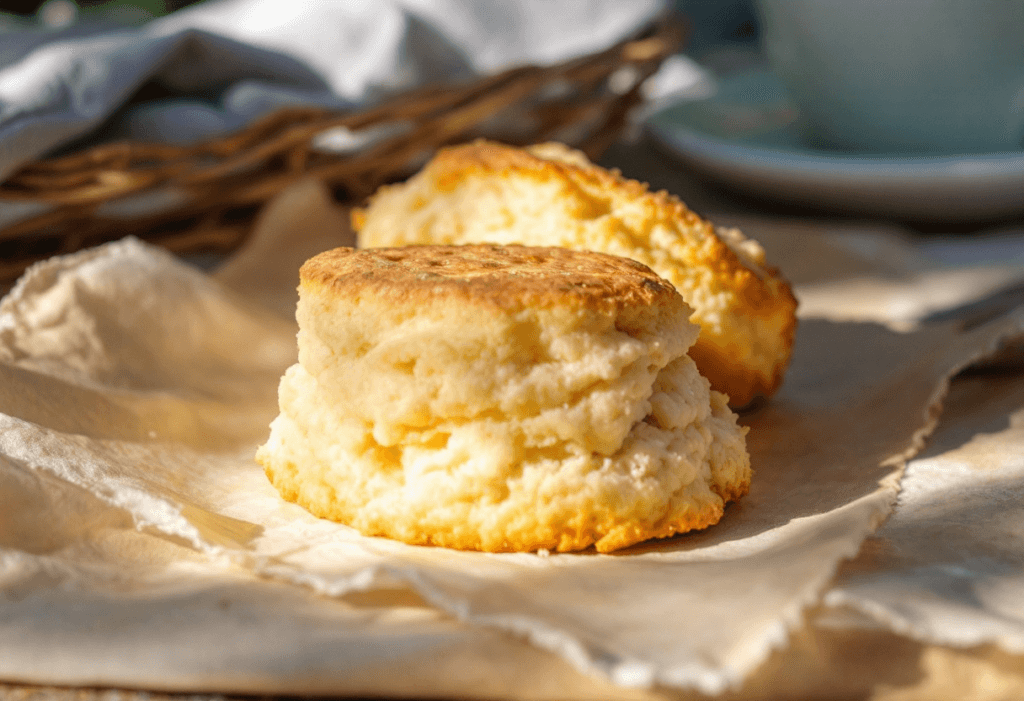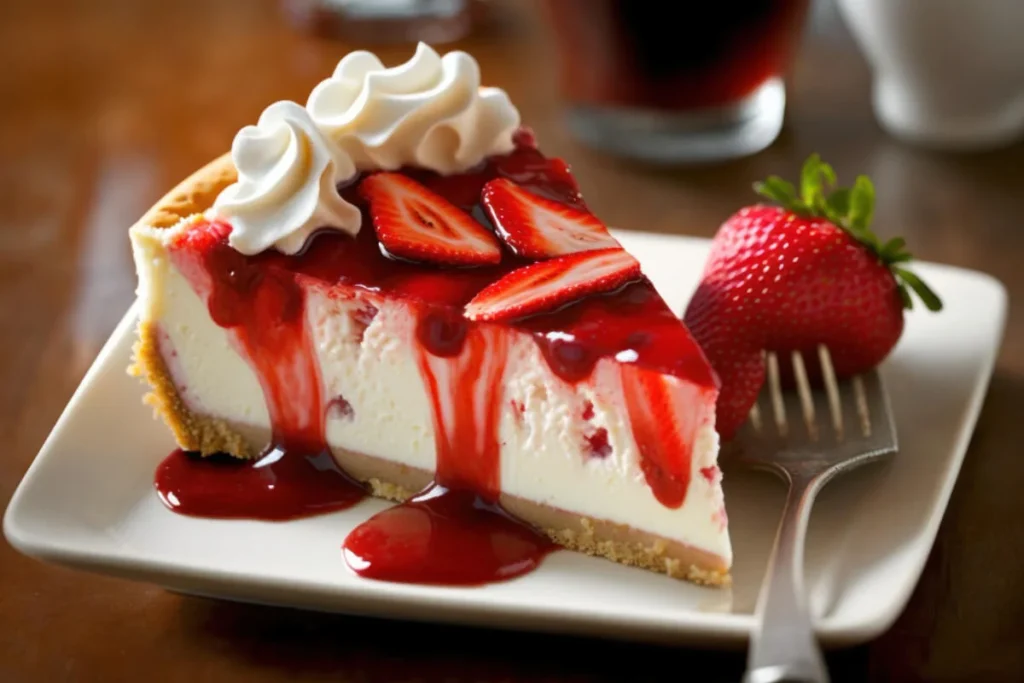
Introduction
Brief History and Origin of Buttermilk Biscuits
Buttermilk biscuits are a quintessential Southern comfort food with roots deeply embedded in American culinary history. Originating in the Southern United States, these biscuits were initially created as a practical, cost-effective bread alternative for households that had limited resources. The introduction of leavening agents like baking powder in the 19th century elevated biscuits from dense bread to the light, fluffy treats we know today.
Characteristics of a Perfect Biscuit
A perfect buttermilk biscuit is soft, flaky, and golden-brown on the outside, with a tender, pillowy interior. Its signature layers are achieved through proper folding and the use of cold fat in the dough, creating steam pockets during baking. The flavor is rich and slightly tangy, thanks to the buttermilk, which also helps tenderize the dough.
Popularity in Southern Cuisine
Buttermilk biscuits are a cornerstone of Southern cuisine, often served alongside fried chicken, gravy, or simply enjoyed with butter and jam. Their versatility makes them a staple for breakfast, lunch, or dinner, and they hold a cherished place in family gatherings and holiday feasts.
Key Ingredients
Importance of Buttermilk
Buttermilk is the star ingredient in these biscuits, offering a subtle tangy flavor and contributing to their tender crumb. The acidity in buttermilk reacts with leavening agents like baking powder or baking soda, creating carbon dioxide that helps the biscuits rise beautifully.
Role of Cold Butter or Shortening
Cold butter or shortening is crucial for creating the biscuit’s flaky texture. As the fat melts during baking, it creates steam, forming delicate layers in the dough. Butter provides a rich, buttery flavor, while shortening can yield a lighter texture. Some bakers prefer a mix of both for the best of both worlds.
Types of Flour to Use (AP Flour vs. Self-Rising)
Flour selection plays a significant role in biscuit texture. All-purpose (AP) flour is a versatile choice, but self-rising flour, which already contains leavening agents and salt, is a convenient alternative. Southern bakers often favor soft wheat flour, like White Lily, for its low protein content, resulting in ultra-tender biscuits.
Equipment Needed
Mixing Bowls and Pastry Blender
A large mixing bowl is essential for combining the dry ingredients and forming the dough. A pastry blender is a helpful tool for cutting cold butter into the flour, ensuring an even distribution of fat to create flaky layers. If you don’t have a pastry blender, you can use a fork or your fingers, working quickly to avoid melting the butter.
Biscuit Cutter or Glass
A biscuit cutter with a sharp edge is ideal for cutting clean, round shapes from the dough without compressing the edges, which helps the biscuits rise evenly. If you don’t have a biscuit cutter, a floured glass with a thin rim can work as a substitute. Avoid twisting the cutter, as this can seal the edges and prevent the biscuits from rising properly.
Baking Sheet and Parchment Paper
A sturdy baking sheet provides an even surface for the biscuits to bake, while parchment paper prevents sticking and ensures easy cleanup. If you don’t have parchment paper, a lightly greased baking sheet works as well.
Step-by-Step Recipe for Buttermilk Biscuits
Measuring and Mixing Dry Ingredients
- Measure Accurately: Combine your flour, baking powder, baking soda, sugar, and salt in a large mixing bowl. Whisk thoroughly to distribute the leavening agents and ensure even baking.
- Optional Sifting: Sift the dry ingredients for an extra-light texture, especially if the flour has clumps.
Cutting in the Butter
- Use Cold Butter: Cut chilled butter into small cubes and add it to the dry ingredients.
- Blend Quickly: Use a pastry blender, fork, or your fingers to work the butter into the flour until the mixture resembles coarse crumbs. Small pea-sized pieces of butter are ideal for creating flaky layers.
Adding Buttermilk and Forming the Dough
- Add Buttermilk Gradually: Pour cold buttermilk into the mixture, stirring gently with a wooden spoon or spatula until just combined. The dough should be slightly sticky but not overly wet.
- Avoid Overmixing: Overworking the dough can make the biscuits tough, so stop mixing as soon as the ingredients come together.
Cutting and Baking the Biscuits
- Shape the Dough: Turn the dough onto a floured surface and gently pat or roll it to about ¾-inch thickness. For flakier biscuits, fold the dough over itself a few times before rolling it out.
- Cut the Biscuits: Use a biscuit cutter or glass to cut out rounds, pressing straight down without twisting. Re-roll the scraps as needed, handling the dough minimally to maintain its texture.
- Bake to Perfection: Place the biscuits on a parchment-lined baking sheet, ensuring they touch for soft sides or are spaced apart for crispier edges. Bake in a preheated oven at 425°F (220°C) for 12-15 minutes, or until golden brown.
- Serve Warm: Brush the tops with melted butter for added flavor, and serve warm with your favorite accompaniments like butter, jam, or gravy.
Variations of Buttermilk Biscuits
Cheddar and Herb Biscuits
For a savory twist, add shredded cheddar cheese and fresh herbs like chives, parsley, or rosemary to the dough. These biscuits pair wonderfully with soups, stews, or roasted meats. Mix the cheese and herbs into the dry ingredients before adding the butter to ensure even distribution.
Sweet Biscuits with Sugar or Cinnamon
Transform your biscuits into a sweet treat by incorporating sugar, cinnamon, or even chocolate chips into the dough. Sprinkle the tops with cinnamon sugar before baking for a caramelized finish. These sweet biscuits are perfect for breakfast or dessert, served with honey or whipped cream.
Whole Wheat or Gluten-Free Alternatives
For a healthier option, substitute part or all of the all-purpose flour with whole wheat flour. While this may produce a denser biscuit, adding a bit of extra buttermilk can help maintain tenderness. Gluten-free flours, such as a 1-to-1 baking blend, can also be used for those with dietary restrictions, ensuring everyone can enjoy these classic biscuits.

Tips for Light and Fluffy Biscuits
Keeping Ingredients Cold
The key to flaky biscuits is keeping the butter and buttermilk cold. Cold butter creates steam as it melts during baking, forming layers. To ensure this, chill your mixing bowl and utensils, and work quickly to keep the dough cool.
Avoiding Over-Kneading
Handle the dough gently and knead it only a few times to bring it together. Over-kneading develops gluten, which can result in tough, dense biscuits. Aim for a slightly shaggy dough that just holds its shape.
Preheating the Oven Properly
Biscuits need high heat to rise quickly, so preheat your oven to the recommended temperature (usually 425°F or 220°C) before baking. Use an oven thermometer to ensure accurate temperatures, as even small variations can affect the texture and rise of your biscuits.
Serving Suggestions
Classic Pairings: Gravy, Jam, or Honey
Buttermilk biscuits are a versatile companion to many classic flavors. Serve them smothered in creamy sausage gravy for a hearty Southern breakfast. For a sweet touch, spread them with homemade jam, preserves, or a drizzle of honey. Butter is a timeless addition that complements the biscuit’s rich and flaky texture.
Biscuits as a Breakfast Sandwich Base
Use biscuits as a base for breakfast sandwiches by splitting them in half and adding fillings like eggs, cheese, and bacon or sausage. Their soft yet sturdy texture makes them perfect for holding together savory ingredients. For a lighter option, layer with avocado, tomato, and fresh greens.
Using Biscuits in Casseroles and Pot Pies
Biscuits make an excellent topping for casseroles and pot pies. Arrange raw biscuits on top of a creamy filling, such as chicken pot pie, and bake until golden. This approach transforms simple dishes into a comforting and satisfying meal.
Storing and Reheating Biscuits
Proper Ways to Cool and Store
Allow freshly baked biscuits to cool completely before storing. Place them in an airtight container or resealable bag and store at room temperature for up to 2 days. Avoid refrigerating biscuits, as this can dry them out.
Freezing for Longer Shelf Life
To extend their shelf life, freeze biscuits. Arrange cooled biscuits in a single layer on a baking sheet and freeze until solid. Transfer them to a freezer-safe bag or container, and they’ll keep for up to 3 months. To reheat, bake frozen biscuits at 375°F (190°C) for 10-15 minutes.
Reheating Without Losing Freshness
Reheat biscuits in the oven for the best texture. Place them on a baking sheet, cover with foil to retain moisture, and bake at 350°F (175°C) for 10 minutes. Alternatively, you can use a microwave, but wrap the biscuit in a damp paper towel to prevent it from drying out.
Frequently Asked Questions (FAQs)
Can I Substitute Buttermilk?
Yes, if you don’t have buttermilk, you can make a substitute by adding 1 tablespoon of white vinegar or lemon juice to 1 cup of milk. Let it sit for 5 minutes before using. You can also use plain yogurt or kefir, thinned with a little water to achieve a similar consistency.
What If I Don’t Have a Biscuit Cutter?
If you don’t have a biscuit cutter, a floured glass with a thin rim works as a substitute. Alternatively, you can shape the dough into a square and cut it into even pieces with a knife for square biscuits, avoiding any waste from scraps.
Why Are My Biscuits Tough?
Tough biscuits are often the result of over-kneading or over-mixing the dough. Handle the dough gently and stop mixing as soon as the ingredients come together. Using too much flour during shaping can also make the biscuits dense, so use just enough to prevent sticking.
How Long Do They Stay Fresh?
Freshly baked biscuits can stay soft and flavorful for up to 2 days when stored in an airtight container at room temperature. For longer storage, freezing is the best option. Avoid refrigerating biscuits, as it can dry them out.
Are There Vegan Options?
Yes, you can make vegan biscuits by substituting plant-based milk (such as almond or soy milk) mixed with lemon juice or vinegar for buttermilk. Use vegan butter or coconut oil instead of regular butter. Many vegan versions yield equally fluffy and delicious results.
Can I Use Self-Rising Flour?
Absolutely! Self-rising flour already contains leavening agents and salt, so you can skip adding baking powder and additional salt to the recipe. However, keep in mind that using self-rising flour can alter the flavor slightly, so adjust seasonings as needed.

Buttermilk biscuits are a beloved Southern classic known for their tender, flaky texture and rich, tangy flavor. Crafted with simple ingredients like buttermilk, flour, and butter, they are versatile enough to complement both savory dishes, such as scalloped potatoes and ham, and sweet toppings like honey or jam. Whether enjoyed as part of a hearty breakfast, served with creamy gravy, or used in creative recipes, these biscuits are a timeless favorite that bring comfort and warmth to the table. For more recipes that inspire, visit OrgRecipes.
Buttermilk Biscuits Around the World
Similar Baked Goods in Different Cultures
Buttermilk biscuits have relatives in various cuisines worldwide. In the United Kingdom, scones share similarities with biscuits, often served with clotted cream and jam. Latin American empanadas and Indian naan are other examples of culturally significant breads, each offering unique flavors and textures. These breads, like biscuits, serve as versatile staples in their respective culinary traditions.
Global Variations and Names
While “biscuits” in the United States refer to flaky bread, the term in the UK describes cookies or sweet crackers. Globally, other baked goods share a comparable role: French croissants, Italian focaccia, and Middle Eastern pita bread. Each reflects local ingredients and traditions but shares the universal appeal of freshly baked bread.
Why Biscuits Remain Universally Loved
The love for biscuits stems from their simplicity and adaptability. Whether served with a rich gravy, sweet toppings, or as part of a savory dish, their warm, tender texture evokes comfort and nostalgia. Their ability to complement diverse cuisines solidifies their place in kitchens worldwide.
Conclusion
Recap of the Biscuit-Making Process
Making buttermilk biscuits involves combining basic ingredients—flour, butter, buttermilk, and leavening agents—into a quick, tender dough. Key steps like cutting in cold butter and handling the dough gently result in flaky layers, while baking at high heat ensures a golden finish.
Encouragement to Experiment with Recipes
Biscuits are highly versatile, offering endless opportunities for customization. Try adding herbs, cheeses, or sweet ingredients like cinnamon or fruit to make them your own. Experimenting with alternative flours or plant-based substitutes also accommodates dietary preferences without sacrificing flavor.
Final Thoughts on Biscuit Tradition and Versatility
Buttermilk biscuits are more than a recipe—they’re a symbol of hospitality and culinary creativity. Their universal appeal bridges cultural gaps, offering comfort in countless forms. Whether you’re following a traditional recipe or exploring new variations, biscuits remain a beloved and adaptable staple in kitchens around the globe.
Viral Tuna Salad: 5 Bold Reasons Matthew McConaughey’s Recipe Wins
Healthy Homemade Chicken Mortadella
Chicken Mortadella changed my deli game forever. I used to stare at processed meat…
The BEST Taco Pasta
When I’m short on time and need to get a satisfying dinner on…
Classic German Kartoffelpuffer Recipe (Authentic, Crispy & Easy to Make)
Easy Butter Pecan Cookies Recipe
There’s something undeniably comforting about the scent of buttery, nutty cookies wafting from…
Perfect Strawberry Cheesecake Recipe
If there’s one dessert that’s guaranteed to silence a lively room, it’s this…







6 thoughts on “Buttermilk Biscuits”